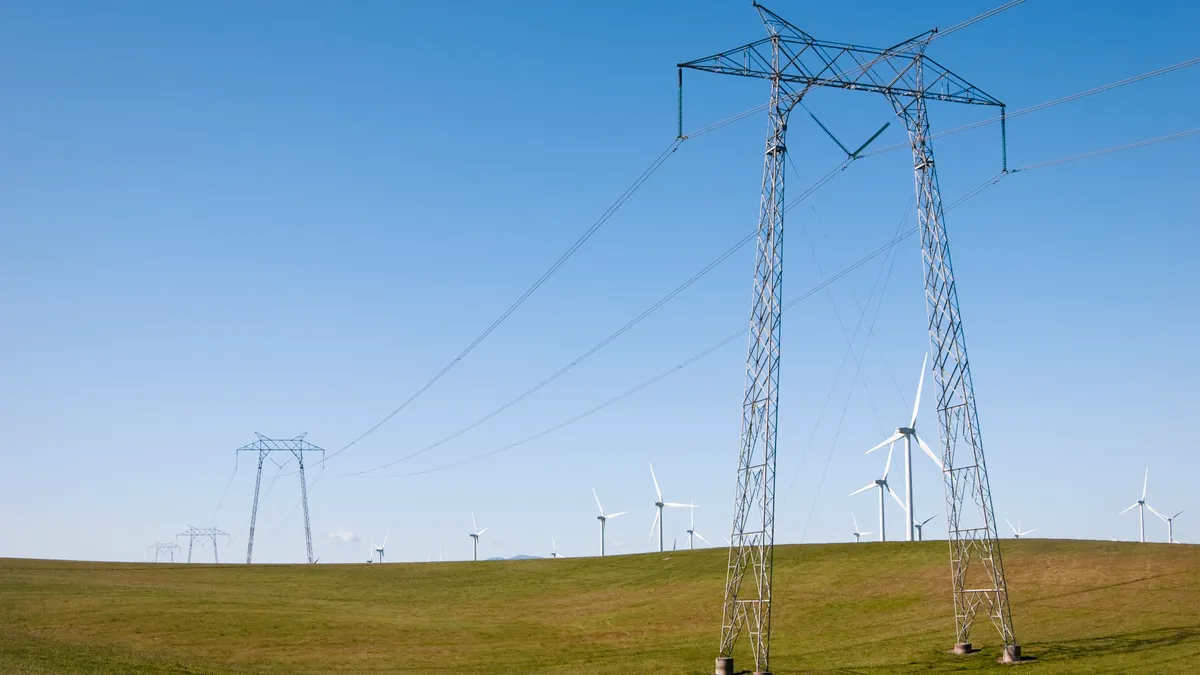Dive Brief:
- California’s transmission permitting process is not sufficient to efficiently review the number of new transmission projects in the state’s pipeline, according to a new report from the Center for Energy Efficiency and Renewable Technologies and GridLab.
- Like the rest of the country, California has seen a flurry of investment in clean energy projects thanks in part to the federal Inflation Reduction Act and the bipartisan infrastructure Law, the report’s authors noted. But the number of potential projects has overwhelmed the California Independent System Operator’s interconnection processes, they said.
- “Without the needed transmission, it’s going to be a big setback on the [clean energy transition],” Ed Smeloff, a consultant to CEERT, said. “We need to build 7,000 MW to 8,000 MW of clean energy to meet the SB 100 zero-carbon goal.” SB 100 requires the state's electricity sales to be entirely supplied by renewable energy and zero-carbon resources by 2045.
Dive Insight:
On the one hand, the CEERT and Gridlab report found that the California Independent System Operator has improved its transmission planning processes with a new “zonal” approach to coordinating transmission planning, interconnection queuing and procuring resources, which experts expect will help reduce the interconnection request queue.
At the same time, “transmission development in California has not kept pace with reliability and clean energy needs over the past decade,” the report’s authors said.
The most immediate concern identified by the report is the permitting process at the California Public Utilities Commission, Smeloff said. The agency’s permitting processes – outlined in its General Order 131-D – include an analysis of the need for the transmission project, as well as an economic and environmental impact assessment. However, this need determination process makes project permitting timelines longer by years, according to the report.
“Part of the problem is that [this process] is from a period in time when we weren’t doing much transmission, because load growth was pretty modest or almost non-existent – so they are kind of out of practice,” Smeloff explained.
California lawmakers advanced multiple pieces of legislation this year to revamp the California Public Utilities Commissions’ transmission permitting process, and expedite the steps to begin construction. This included two bills – SB 420 and SB 619 – that were vetoed by Gov. Gavin Newsom, D, who noted in a veto message that he would direct a separate infrastructure strike team to expedite the development of power infrastructure. SB 420 would have raised the voltage threshold for transmission projects that require a CPUC permit, while SB 619 would have allowed project applicants to request an expedited environmental review by the California Energy Commission.
“The vetoes of SB 420 and SB 619 put the issue of transmission permitting reform directly in front of the CPUC,” the report noted.
In addition to stressing the need to reform the CPUC’s transmission permitting process, the report’s authors also urged the state legislature to take a more active role in transmission permitting reform, including by considering a renewable energy transmission authority to take on these issues.
The big challenge in implementing these and the other recommendations in the report will be getting the senior leadership in the governor’s office and CPUC to understand that they are urgently needed, Smeloff said.
CAISO has not had a chance to review the report thoroughly, spokesperson Anne Gonzales said in an email. She pointed out, however, that the report quotes the system operator’s May 2023 transmission plan, as well as describes the intent of its interconnection process enhancement initiative, which focuses on making broader changes to the way the state procures resources, plans for transmission, and interconnects projects.
The CPUC did not respond to a request for comment.















